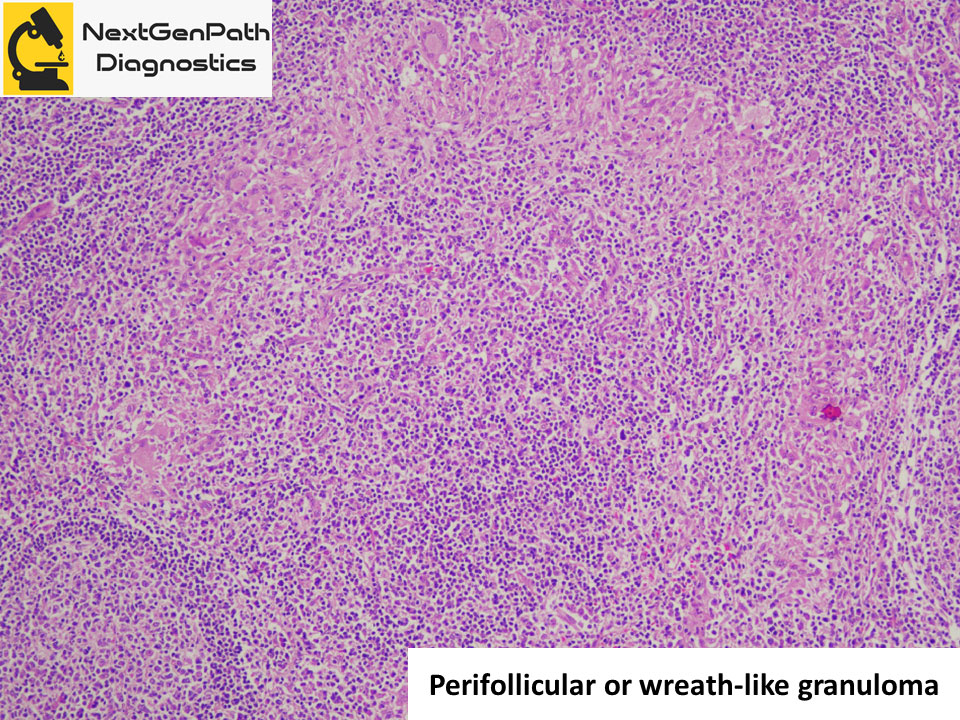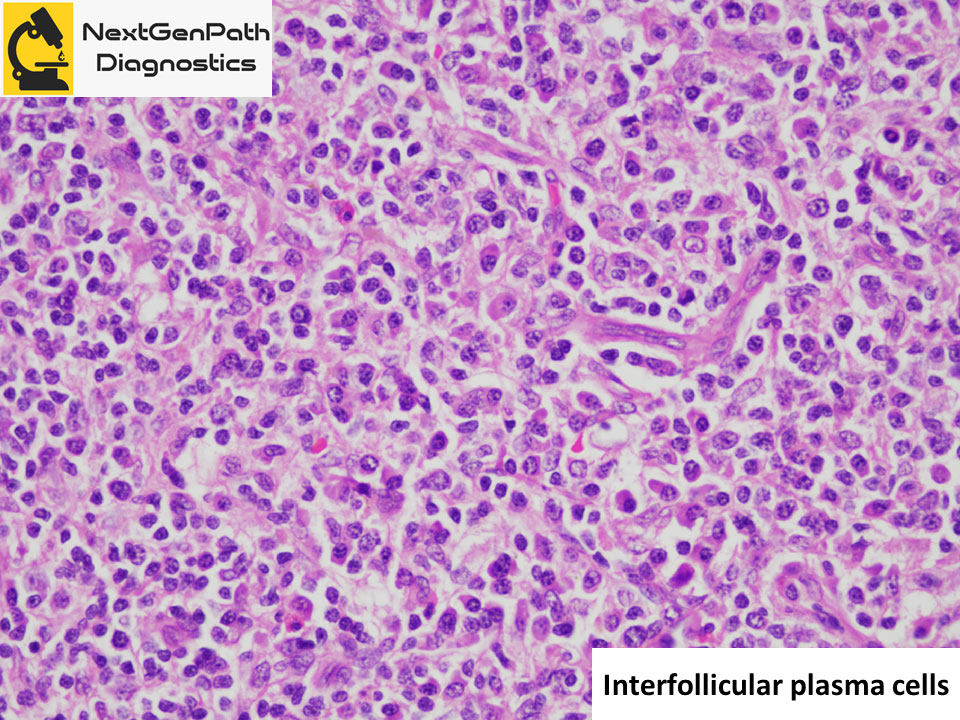IgG4-related disease (IgG4-RD)
-
The IgG4-related disease (IgG4-RD) was first described as a systemic immune-mediated non-neoplastic disease associated with IgG4 positive plasma cells and fibrosis by Kamisawa et al.
-
It often presents as a mass lesion and can be confused with malignancy.
-
Although the disease could affect virtually any anatomical site, there are strong predilections for certain organs such as the major salivary glands, the orbit, lacrimal glands, the pancreaticobiliary system, lung, kidney, aorta, retroperitoneum, meninges, and thyroid gland.
-
IgG4-related lymphadenopathy is a common but under recognized manifestation of IgG4-RD. Generalized lymphadenopathy is reported in up to 80% of patients with IgG4-RD on imaging. It can be the initial manifestation of systemic IgG4-RD or can occur in the due course of the illness. Most often, multiple lymph node groups are commonly involved and unlike lymphomas, constitutional symptoms are generally absent.
-
Characteristic histopathological features of IgG4-RD have been established for extranodal sites. However, most of the studies with regards to IgG4-related lymphadenopathy have documented mainly nonspecific histopathological features.
-
A recent study by Bledsoe et al. has focussed on this issue.
-
Established morphologic patterns of IgG4-related lymphadenopathy include Castleman disease-like, follicular hyperplasia, interfollicular expansion, progressive transformation of germinal centers (PTGC), and inflammatory pseudotumor (IPT)-like patterns. Their study has shown that the IPT-like and interfollicular expansion patterns of IgG4-related lymphadenopathy are highly specific for IgG4-RD.
-
Perifollicular or wreath-like granulomas have also been reported to be characteristic features.
-
The diagnosis of IgG4-RD in lymph node excision biopsy is difficult and cannot be solely based on morphology and immunohistochemistry. In an appropriate clinical setting and supportive investigations, the diagnosis can be made.
-
An early diagnosis renders timely intervention and prevents the progression of the disease and its complications.
References
-
Bledsoe JR, Della-Torre E, Rovati L et al. IgG4-related disease: review of the histopathologic features, differential diagnosis, and therapeutic approach. APMIS. 2018;126:459-476.
-
Bledsoe JR , Ferry JA , Neyaz A et al. IgG4-related lymphadenopathy: A comparative study of 41 cases reveals distinctive histopathologic features. 2020 Sep 1. doi: 10.1097/PAS.0000000000001579. Online ahead of print.


